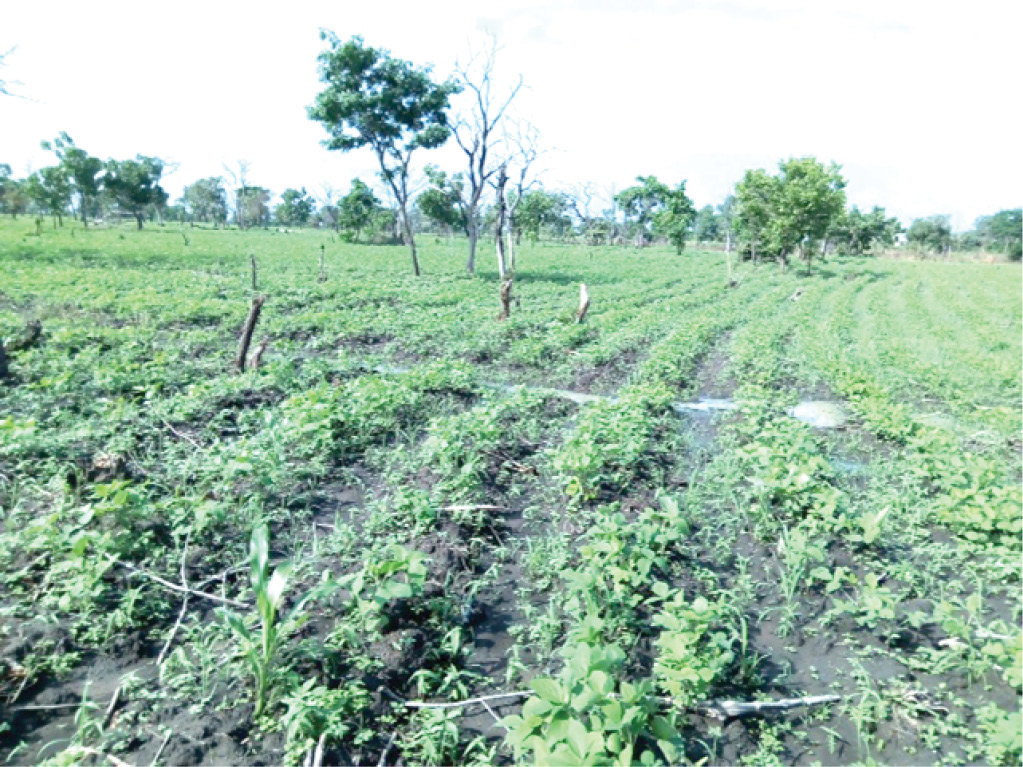Increasing interest in growing soybeans under irrigation in western Nebraska got agronomists in that state pondering what size row widths were best for irrigated soybeans.
In that area of Nebraska and other irrigated regions of the High Plains, “continuous corn has been the most common and, in many cases, the most profitable irrigated crop sequence,” explains Strahinja Stepanovic of the University of Nebraska.
Stepanovic was part of the university’s research team including Laura Thompson and Keith Glewen. “However, difficulties in managing resistant pests (particularly western corn rootworm and western bean cutworm) and bacterial disease outbreaks (such as Goss’s wilt or bacterial leaf streak) have triggered the need for adding other crops, such as soybeans, to irrigated crop rotations in southwest Nebraska,” he says.
Many farmers in this area of the country have reported superior soybean yields with 15-inch rows due to the faster rate of canopy closure, better weed suppression, and reduced evaporative loss early in the season.
No going back on cash withdrawal limits, NFIU tells govs
No going back on cash withdrawal limits, NFIU tells govs
However, the Nebraska researchers found there was limited data available on what those yield differences may be.
So, the team set out to determine what the yield differences were with irrigated soybeans planted in 15- vs. 30-inch rows. Aided by funds from the Nebraska Soybean Board, the researchers conducted three replicated on-farm studies comparing yields at those row widths for two different years and in two different locations.
Definitely High Yields
When averaged across the two sites, soybeans planted in 15-inch rows yielded 67 bushels per acre, 7 bushels more than beans in 30-inch rows, which yielded 60 bushels per acre. Yield differences ranged from 4 bushels at one location for two years up to 12 bushels at the other research site.
In addition, soybeans planted in 15-inch rows also had lower grain moisture at harvest (up to 0.9% less) and significantly greater marginal net return ($25 to $128 per acre) than beans in 30-inch rows.
In addition, aerial imagery at the Chase County, Nebraska, research site in 2017 showed less vigor and higher thermal stress in 30-inch-row soybeans during the early reproductive growth. The on-farm research cooperator at that research site also observed better suppression of volunteer corn in soybeans planted in 15-inch rows.
Less Thermal Stress
Based on the results of those field tests, the research team recommends planting irrigated beans in 15-inch rows. “Aerial imagery showed less thermal stress in 15-inch-row spacing, which suggests that in cases where water may be limiting, such as in sandy soils with low water-holding capacity and higher evaporative losses, there may be an even greater benefit to 15-inch-row spacing for soybeans,” Stepanovic says.
But he does warn that “although we have not observed differences in disease pressure in our field studies, it has been reported that planting soybeans in 15-inch rows may increase the occurrence of white mold disease.”
The only cost consideration when switching to narrow-row soybeans would be the extra investment in a narrow-row planter or having to double-plant fields.
Source: Successful Farming




